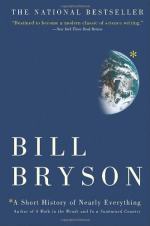
|
| Name: _________________________ | Period: ___________________ |
This quiz consists of 5 multiple choice and 5 short answer questions through Part 3, Chapter 11.
Multiple Choice Questions
1. According to James Ussher, an Archbishop of the Church of Ireland who was alive in the 1600s, Earth had been created:
(a) On October 23, 4004 B.C.
(b) Millions of years ago.
(c) On January 1, 10,000 B.C.
(d) In an instant.
2. Astronomer Edmond Halley believed that the distance from the Earth to the sun could be deduced from the:
(a) Transits of Venus.
(b) Distance to the moon.
(c) Position of Mars.
(d) Size of solar flares.
3. In 1875, why was Max Planck advised against studying physics and urged to study math instead?
(a) It was believed that all the important physics discoveries had already been made.
(b) The government often arrested those who delved in certain branches of physics.
(c) Planek knew high-level math but only very basic physics.
(d) A career in math offered greater financial opportunities for him.
4. The Geiger counter is a:
(a) Magnetic imager.
(b) Voltage meter.
(c) Molecular microscope.
(d) Radioactivity detector.
5. What did the French Compte de Buffon claim about the New World (the Americas) compared to the known Old World?
(a) Everything was smaller and inferior in the New World.
(b) Diseases of the New World would be much more deadly than in the Old World.
(c) The New World was much more fertile than the old.
(d) Unusual, enormous species would be found in the New World.
Short Answer Questions
1. Many scientists suspect that Pluto is just a comet of the:
2. Sir Isaac Newton wrote "Mathematical Principles of Natural Philosophy," which explains his laws of what?
3. While he worked at General Motors Research Corporation in 1921, engineer Thomas Midgley, Jr. developed what dangerous gasoline additive?
4. Today, scientists know that radiation in high doses is:
5. When was the Big Bang Theory first proposed?
|
This section contains 297 words (approx. 1 page at 300 words per page) |

|




